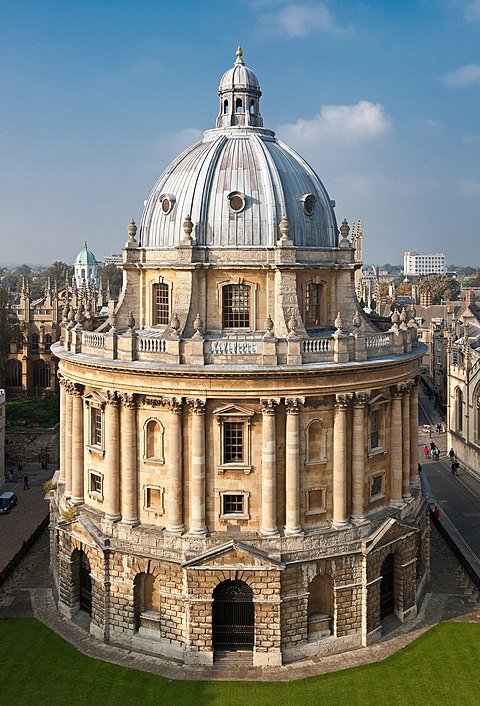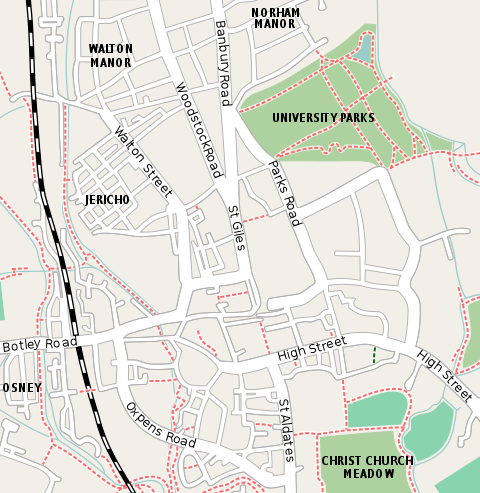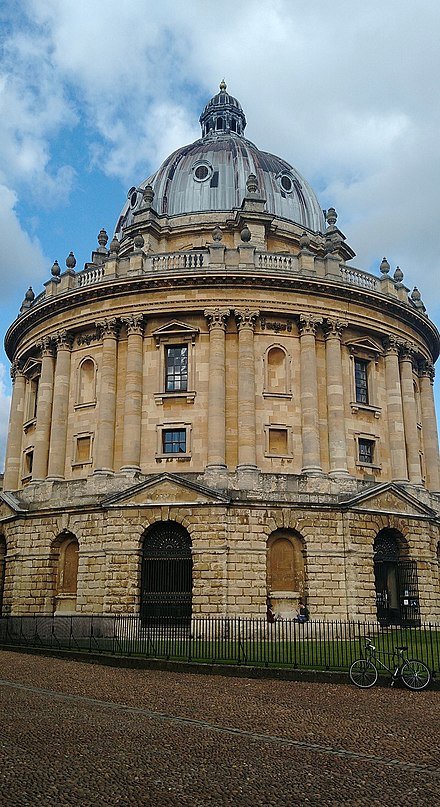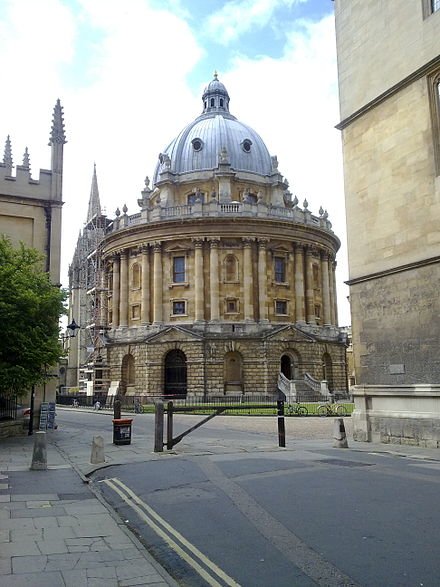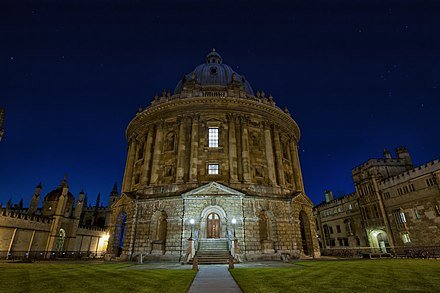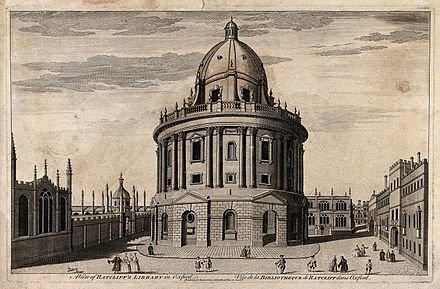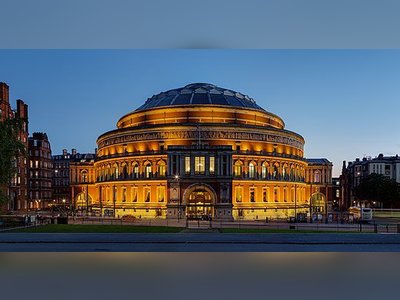British Heritage
Remember, Cherish, Learn.
beta
Radcliffe Camera
Contribution of the Radcliffe Camera to British Heritage.
The Radcliffe Camera, colloquially known as the "Rad Cam" or "The Camera," holds a prominent place in British heritage as an iconic architectural landmark and a significant center of academic excellence. Designed by the renowned architect James Gibbs, this neo-classical building was constructed between 1737 and 1749 to house the Radcliffe Science Library of Oxford University, England. Its circular shape, strategic location in the heart of Oxford, and its isolation from other buildings make it a focal point of the university, and it has become an integral part of shorthand visual representations of Oxford's academic prestige.
The legacy of the Radcliffe Camera is deeply rooted in the philanthropic vision of John Radcliffe, a prominent physician who attended Oxford University and treated notable figures such as William III and Queen Anne. Upon his death in 1714, Radcliffe left a generous sum of £40,000 to fund the construction and maintenance of the library, and his will specified the construction to begin in 1737. The development of the site and negotiation with various stakeholders, including colleges and landowners, extended the timeline, but the library's exterior was eventually completed by 1747, and it officially opened its doors to the public on 13 April 1749.
The Radcliffe Camera's architectural brilliance and innovative circular design set it apart as a unique structure in England. As the earliest example of a circular library in the country, it has become an architectural gem that reflects the neoclassical style of the 18th century. Its grandeur and attention to detail make it an enduring symbol of Oxford University's commitment to academic excellence and knowledge dissemination. The Radcliffe Camera's contribution to British heritage lies not only in its physical beauty but also in its role as a hub of intellectual activity and scholarship for generations of students and researchers.
Throughout its history, the Radcliffe Camera has stood as a testament to the generosity and foresight of John Radcliffe, who sought to create a lasting institution for the advancement of learning. The library's dedication to housing valuable scientific and academic collections further emphasizes its commitment to academic progress and the preservation of knowledge.
Upon its completion, the Radcliffe Camera became a central hub for academic research and study at Oxford University. Initially, the library housed books spanning various subjects, but later, under the leadership of George Williams, it narrowed its focus to the sciences. This shift allowed the library to specialize and deepen its scientific collections, making it a go-to resource for researchers and scholars in various scientific disciplines.
With successive librarians, including Francis Wise, Benjamin Kennicott, and John Kidd, the Radcliffe Camera expanded its collections, adding valuable books, manuscripts, and historical documents. The library's status as a repository for scientific and academic works further cemented its role as an essential institution for research and education in Britain.
During Henry Wentworth Acland's tenure, the library's transformation into the Radcliffe Science Library began, leading to its integration with the University's academic structure. This move solidified the Radcliffe Camera's position as an integral part of the Bodleian Libraries, enhancing its contribution to academic excellence and British heritage.
The Radcliffe Camera is an architectural marvel that exemplifies the neoclassical style of the 18th century. Built in three main stages externally and two stories internally, it features a circular design with a lanterned dome on an octagonal drum and a balustraded parapet with vases. The building's exterior is adorned with rusticated stonework and Corinthian columns, creating a grand and dignified appearance.
Internally, the ground stage consists of a heavily rusticated base with pedimented projections and niches. The central stage features coupled Corinthian columns, supporting a continuous entablature. The top stage houses the dome, covered with lead and providing natural light to the interior.
Originally intended to house the Radcliffe Science Library, the building evolved over the years to become a reading room for the Bodleian Libraries, housing books on English, history, and theology. It continues to serve as a critical center for academic research and study at Oxford University.
The Radcliffe Camera's enduring legacy as an architectural masterpiece and an academic institution remains a testament to the vision of John Radcliffe and the commitment of successive librarians to academic excellence and the preservation of knowledge. Its contributions to British heritage and the advancement of learning make it an invaluable part of Oxford's academic and cultural landscape.
The legacy of the Radcliffe Camera is deeply rooted in the philanthropic vision of John Radcliffe, a prominent physician who attended Oxford University and treated notable figures such as William III and Queen Anne. Upon his death in 1714, Radcliffe left a generous sum of £40,000 to fund the construction and maintenance of the library, and his will specified the construction to begin in 1737. The development of the site and negotiation with various stakeholders, including colleges and landowners, extended the timeline, but the library's exterior was eventually completed by 1747, and it officially opened its doors to the public on 13 April 1749.
Contribution to British Heritage
The Radcliffe Camera's architectural brilliance and innovative circular design set it apart as a unique structure in England. As the earliest example of a circular library in the country, it has become an architectural gem that reflects the neoclassical style of the 18th century. Its grandeur and attention to detail make it an enduring symbol of Oxford University's commitment to academic excellence and knowledge dissemination. The Radcliffe Camera's contribution to British heritage lies not only in its physical beauty but also in its role as a hub of intellectual activity and scholarship for generations of students and researchers.
Throughout its history, the Radcliffe Camera has stood as a testament to the generosity and foresight of John Radcliffe, who sought to create a lasting institution for the advancement of learning. The library's dedication to housing valuable scientific and academic collections further emphasizes its commitment to academic progress and the preservation of knowledge.
Success and Contribution to Academic Excellence
Upon its completion, the Radcliffe Camera became a central hub for academic research and study at Oxford University. Initially, the library housed books spanning various subjects, but later, under the leadership of George Williams, it narrowed its focus to the sciences. This shift allowed the library to specialize and deepen its scientific collections, making it a go-to resource for researchers and scholars in various scientific disciplines.
With successive librarians, including Francis Wise, Benjamin Kennicott, and John Kidd, the Radcliffe Camera expanded its collections, adding valuable books, manuscripts, and historical documents. The library's status as a repository for scientific and academic works further cemented its role as an essential institution for research and education in Britain.
During Henry Wentworth Acland's tenure, the library's transformation into the Radcliffe Science Library began, leading to its integration with the University's academic structure. This move solidified the Radcliffe Camera's position as an integral part of the Bodleian Libraries, enhancing its contribution to academic excellence and British heritage.
General Information and Notable Features
The Radcliffe Camera is an architectural marvel that exemplifies the neoclassical style of the 18th century. Built in three main stages externally and two stories internally, it features a circular design with a lanterned dome on an octagonal drum and a balustraded parapet with vases. The building's exterior is adorned with rusticated stonework and Corinthian columns, creating a grand and dignified appearance.
Internally, the ground stage consists of a heavily rusticated base with pedimented projections and niches. The central stage features coupled Corinthian columns, supporting a continuous entablature. The top stage houses the dome, covered with lead and providing natural light to the interior.
Originally intended to house the Radcliffe Science Library, the building evolved over the years to become a reading room for the Bodleian Libraries, housing books on English, history, and theology. It continues to serve as a critical center for academic research and study at Oxford University.
The Radcliffe Camera's enduring legacy as an architectural masterpiece and an academic institution remains a testament to the vision of John Radcliffe and the commitment of successive librarians to academic excellence and the preservation of knowledge. Its contributions to British heritage and the advancement of learning make it an invaluable part of Oxford's academic and cultural landscape.
- Radcliffe Cameraen.wikipedia.org
